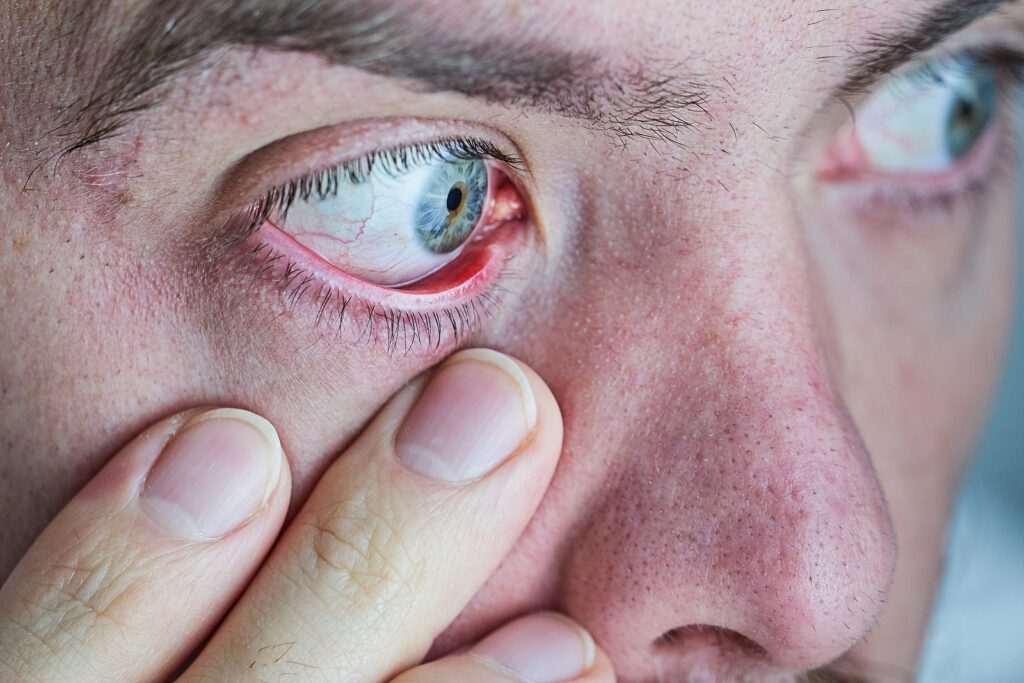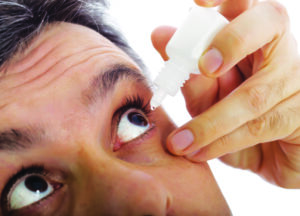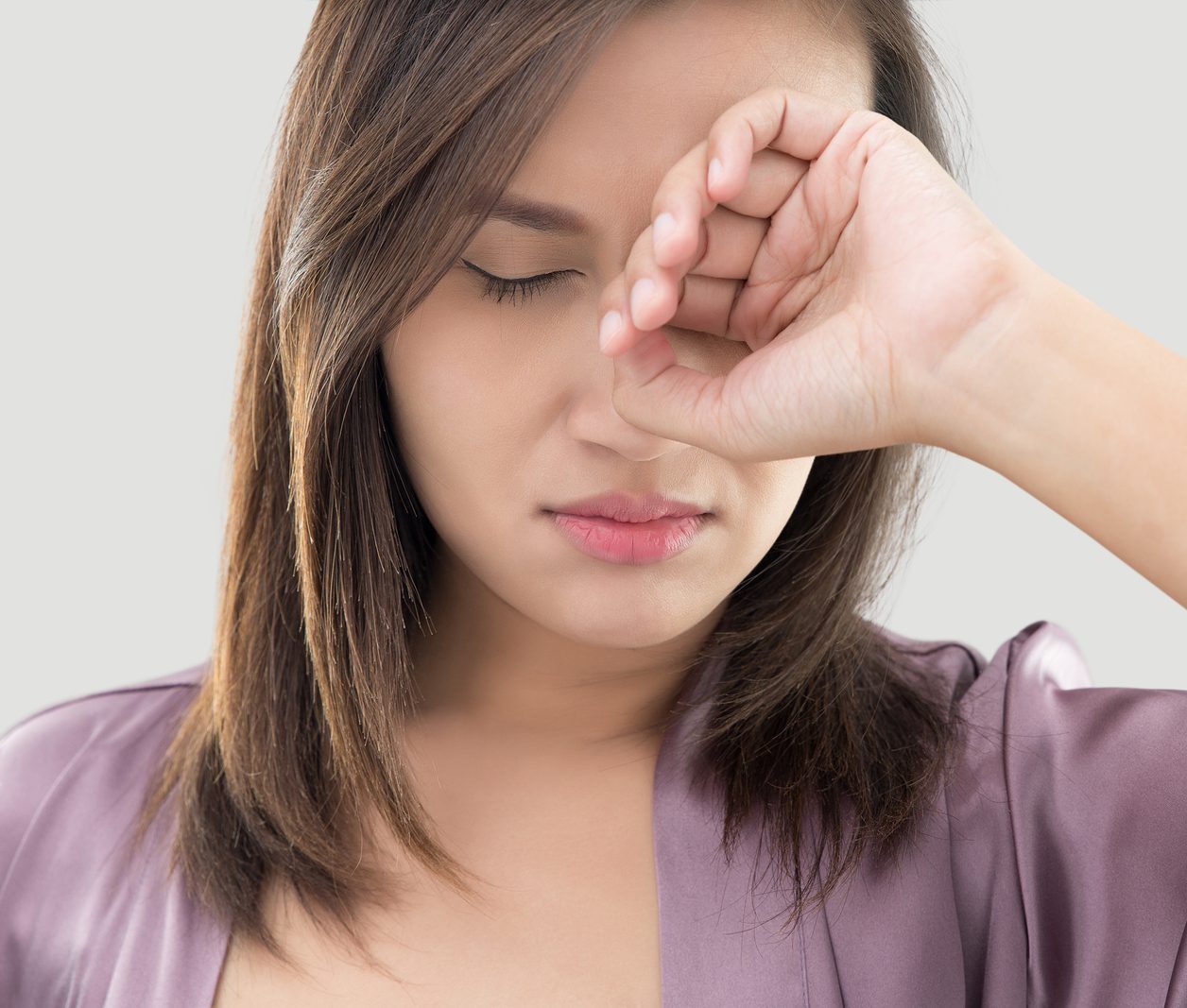What is Dry Eye?
Our eyes are always shedding tears. These tears are not caused by sadness or pain, they are made to create a “tear film.” The tear film provides nutrients to the cornea (first layer of the eye), protects the eyes and gives them moisture that is needed for clear and healthy vision. The tear film is made up of three layers:
- Fat-based oils
- A watery fluid
- Mucus
This combination normally keeps the surface of your eyes lubricated, smooth and clear. Problems with any of these layers can cause dry eyes. When this happens, blinking cannot create the moist “tear film” needed to protect and soothe the eye. The discomfort that results from dry eyes may affect how you see. In some cases, dry eye can decrease your vision. Proper care and treatment can help relieve your symptoms of dry eye.
This resource is supported by:
Fact Sheets to Share and Print
Dry Eye Disease and Meibomian Gland Dysfunction: Focus on Eye Health Expert Series
What are the causes?
Dry eye occurs when there is not enough tear film produced, the tear film is not draining properly from the eye, or the tear film is not the quality needed to maintain the health of the eye and clear vision.
Dry eye is common, with more than 16 million Americans having moderate to severe symptoms. Women are twice as likely to develop dry eye than men. Women who are pregnant, on certain types of birth control, hormone replacement therapy, or experiencing menopause are also more likely to have dry eye.
What are the types of dry eye?
Evaporative dry eye: This is the most common type of dry eye. It occurs when you do not have enough oil in your tears. Meibomian gland dysfunction (MGD), a condition where the eyelid glands don’t produce enough oil or it is of poor quality, is the most common cause of evaporative dry eye.
Aqueous-deficient dry eye: This type occurs when your glands do not make enough of the watery layer of your tears. This can occur with certain autoimmune conditions such as Sjögren syndrome.
Risk factors of dry eye include:
- Being more than 50 years old
- Hormonal changes or medicines that affect hormones
- Refractive surgery (for example, Lasik)
- Inflammation of the eyelids
- Environmental conditions, such as allergies, exposure to smoke, or a dry climate
- Contact lenses
- Poor make-up hygiene
- Certain medications (including some used to treat eye conditions such as glaucoma)
- Medical conditions such as Rheumatoid arthritis, rosacea, Sjögren syndrome, and certain other autoimmune diseases
- Decreased blink rate: Can be caused by frequent computer or device use or occurs in certain diseases, such as Parkinson’s
- Eyelid conditions that cause eyelids to not close completely
Be sure to talk with your eye doctor to determine if there is an underlying cause to your dry eye. Your eye doctor will talk with you about your medical history, environmental risks, and medications. Your eye doctor will also examine your eye and assess the quality and quantity of the tears you produce.
What are the symptoms?

People with dry eye may experience one or more of the following symptoms:
- Fluctuating blurry vision
- Burning or stinging
- Particles in the eye
- Gritty, sandy feeling
- Itchiness
- Redness and inflammation
- Stringy mucus
- Extreme sensitivity, especially to cigarette smoke
- Increased sensitivity to light
Having any of these symptoms may mean that you have dry eye, but they may also be caused by other conditions. A thorough evaluation by your eye doctor is needed to determine the exact cause of these symptoms.
What can you do to prevent dry eye symptoms?
Humidifier: The use of a humidifier helps keep natural moisture in the air and can help with dry eye symptoms. A humidifier is helpful for dry rooms, such as those with air heaters or air conditioning, or in dry climates.
Avoid low humidity conditions (if possible): Hair dryers, harsh winds and cigarette smoke should be avoided whenever possible. In addition, limit air conditioning, forced air heating, windy conditions, and in airplanes or cars when the heater or defroster is on.
Take frequent screen breaks: When using a computer or other electronic device, it is important to remember to blink often and give the eyes frequent rests from staring at the screen (every 20 minutes).
Drink water: Make sure you keep your body and your eyes hydrated by drinking water.
Talk to your eye care professional: If your dry eye is related to an eye condition, such as contact lens wear or the chronic use of glaucoma eye drops, talk to your eye care professional about your options. You can also discuss with your eye care professional if taking vitamins or supplements can help with your symptoms of dry eye.
How can I relieve the discomfort and irritation?
It is important to talk with an eye care professional about your options to help relieve the discomfort and irritation from dry eye.
Over-the-counter eyedrops and ointments: Any pharmacy carries over-the-counter tear film replacements called “artificial tears.” These eyedrops may replace the natural tear film of the eye and provide improved moisture. Artificial tears come in various brands that have different ingredients, including preservatives and preservative-free versions. Ointments can be used before bedtime to make sure your eyes stay lubricated during the night. Frequent use of these preparations, particularly those with preservatives, for long periods of time, may cause toxic irritation or even allergic reactions. Over-the-counter artificial tears solutions are not a treatment for dry eye, although they can lessen the symptoms. It is important to talk with an eye care professional before using these or any other eye drops. It is important to take your eyedrops properly.
Eyelid Care: If the cause of your dry eye is eyelid irritation, your eye doctor may recommend warm compresses on the eye, massaging your eyelids, or eyelid cleanser.

Prescription medications: If you have a more serious case of dry eye, your eye doctor may suggest eye drop, nasal spray, or oral medications that will help with your tear film.
Tear duct plugs: Dry eye can occur when the eye drains too much tear film before it has the chance to provide moisture for the eye. To help keep tears in your eyes, your eye doctor can put plugs in your tear ducts that are located at the inner corners or your eye. These plugs can be removed if needed.
Procedures: There are now devices your eye doctor can use to help release oil in clogged Meibomian glands.
Surgery: For some, dry eye is caused by your bottom eyelids being too loose. Your eye doctor may suggest surgery to tighten your eyelids to keep tears in your eyes.
Resources
Vision Care Financial Assistance Information. This resource contains a list of contact information for organizations and services that provide financial assistance for vision care.
ASPECT Patient Engagement Program. The ASPECT (Advocacy, Support, Perspective, Empowerment, Communication, and Training) is a patient empowerment program at Prevent Blindness. The goal of the ASPECT Program is to empower individuals to be engaged in their eye health from every direction and in every way.


